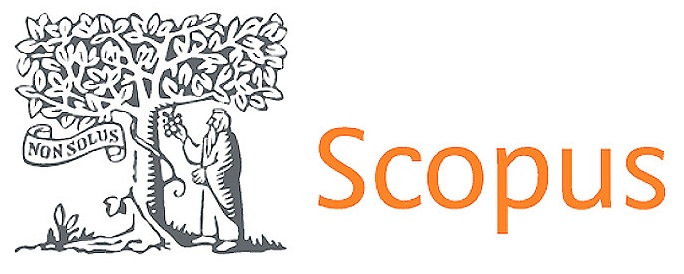Indigenous justice and its relationship with constitutional principles in ecuador: a theoretical and critical study
DOI:
https://doi.org/10.56294/sctconf20231048Keywords:
Plurinational State, Ancestral Traditions, Jurisdictional Autonomy, Cultural Diversity, Customary LawAbstract
This theoretical and critical study examines how indigenous justice, recognized in the Ecuadorian Constitution of 2008, coexists with constitutional principles and human rights. The implementation of indigenous justice generates tensions due to diverse and sometimes conflicting interpretations regarding its coherence with national legal frameworks. These tensions include aligning universal constitutional principles with indigenous local norms, as well as ensuring individual rights in the face of community decisions. The study emphasizes the importance of a pluralistic approach that respects Ecuador's cultural and legal diversity, while ensuring comprehensive and equitable protection of fundamental rights for all citizens, regardless of ethnic or cultural background. The proposed critical analysis addresses the ongoing need for intercultural dialogue and constant review of regulations to ensure that indigenous justice not only respects local traditions but also aligns with constitutional standards and universal human rights, thereby promoting a plurinational state that recognizes and values diversity as a fundamental asset of the nation.
References
1. ANASICHA TENEVACA, V. M. (2022). LA VIOLACIÓN DE LOS PRINCIPIOS CONSTITUCIONALES EN LA JUSTICIA INDÍGENA. Y LA SEGURIDAD JURÍDICA. [PROYECTO DE INVESTIGACIÓN PREVIO A LA OBTENCIÓN DEL TÍTULO DE ABOGADO, UNIVERSIDAD REGIONAL AUTÓNOMA DE LOS ANDES “UNIANDES]. https://dspace.uniandes.edu.ec/bitstream/123456789/15282/1/UR-DER-PDI-120-2022.pdf
2. Durán González, R. E., Juárez Moreno, M., & Raesfeld, L. (2021). Violencia y derecho de las niñas de origen indígena en el Municipio de San Felipe Orizatlán, Hidalgo. Revista Universidad y Sociedad, 13(3).
3. Ecuador Asamblea Nacional Constituyente. (2008). Constitución de la República del Ecuador. Registro Oficial 449 https://www.cec-epn.edu.ec/wp-content/uploads/2016/03/Constitucion.pdf
4. El Universo. (2017). Ecuador: Diversidad genética se revela en estudio médico. Diario El Universo. https://www.eluniverso.com/vida/2017/09/13/nota/6379342/ecuador-diversidad-genetica-se-revela-estudio/
5. García Falconí, J. C. (2020). La justicia indígena. Derecho Ecuador. https://www.derechoecuador.com/la-justicia-indiacutegena
6. García S, F. (2002). Formas indígenas de administrar justicia. Estudios de caso de la nacionalidad quichua ecuatoriana. FLACSO, 1era Edición. http://www.flacso.org.ec
7. Higuera Garavito, J. R. (2022). Planificación del desarrollo sostenible y recuperación postpandemia con perspectiva de derechos en América Latina [Trabajo para la obtención del título de Magister en Derecho Administrativo, Facultad de Derecho. Universidad Santo Tomás]. https://repository.usta.edu.co/handle/11634/44296?show=full
8. Intriago, R. V. G., Mora, L. G. M., & Saenz, J. G. L. (2024). Diversidad cultural y su impacto en el aprendizaje de los estudiantes. Sinergia Académica, 7(2), 306-315. https://sinergiaacademica.com/index.php/sa/article/view/249
9. Jiménez Torres, H. G., Viteri Naranjo, B. C., & Mosquera Endara, M. R. (2021). La justicia indígena y la violación de los principios contemplados en la constitución del Ecuador. Revista Universidad y Sociedad, 13(2), 176-183. http://scielo.sld.cu/pdf/rus/v13n2/2218-3620-rus-13-02-176.pdf
10. Moncayo Peaza, J. D. (2014). Proyecto de ley que permita el procedimiento para el juzgamiento de las contravenciones comedidas en la justicia indígena. Universidad Regional Autónoma de Los Andes “UNIANDES”.
11. Organización Internacional del Trabajo. (1989). Convenio Núm. 169 de la OIT sobre Pueblos Indígenas y Tribales Declaración de las Naciones Unidas sobre los Derechos de los Pueblos Indígenas. Oficina Regional para América Latina y el Caribe. https://www.ilo.org/es/media/443541/download#:~:text=una%20globalizaci%C3%B3n%20equitativa.-,El%20Convenio%20n%C3%BAm.,las%20decisiones%20que%20les%20afectan.
12. Pineda Del Hierro, W. M. (2022). La aplicación de la justicia indígena y la relación con la normativa jurídica (COIP) http://repositorio.utn.edu.ec/jspui/bitstream/123456789/12251/2/PG%201094%20TRABAJO%20GRADO.pdf
13. Ruiz, M. R. H., Martínez, R. C. J., & Ortiz, B. E. T. (2021). Aplicación de los métodos Pest-DAFO para el diagnóstico de la situación actual de la justicia indígena en Ecuador. Universidad y Sociedad, 13(S1), 209-218.
14. Yucailla Baltazar, Á. R., & Barrionuevo Núñez, J. L. (2023). La Justicia Indígena en Ecuador un análisis desde los Derechos Humanos. RECIMUNDO: Revista Científica de la Investigación y el Conocimiento, 7(1), 22-32. https://recimundo.com/index.php/es/article/view/1909
15. Zhumi-Lazo, F. S., & Trelles-Vicuña, D. F. (2020). Los límites de la justicia indígena en el Ecuador. Polo del Conocimiento, 5(08), 1134-1169. https://dialnet.unirioja.es/descarga/articulo/7554394.pdf
Published
Issue
Section
License
Copyright (c) 2023 Luis Fernando Piñas, Beatriz Del Carmen Viteri Naranjo, Francisco Freire Sanchez (Author)

This work is licensed under a Creative Commons Attribution 4.0 International License.
The article is distributed under the Creative Commons Attribution 4.0 License. Unless otherwise stated, associated published material is distributed under the same licence.



